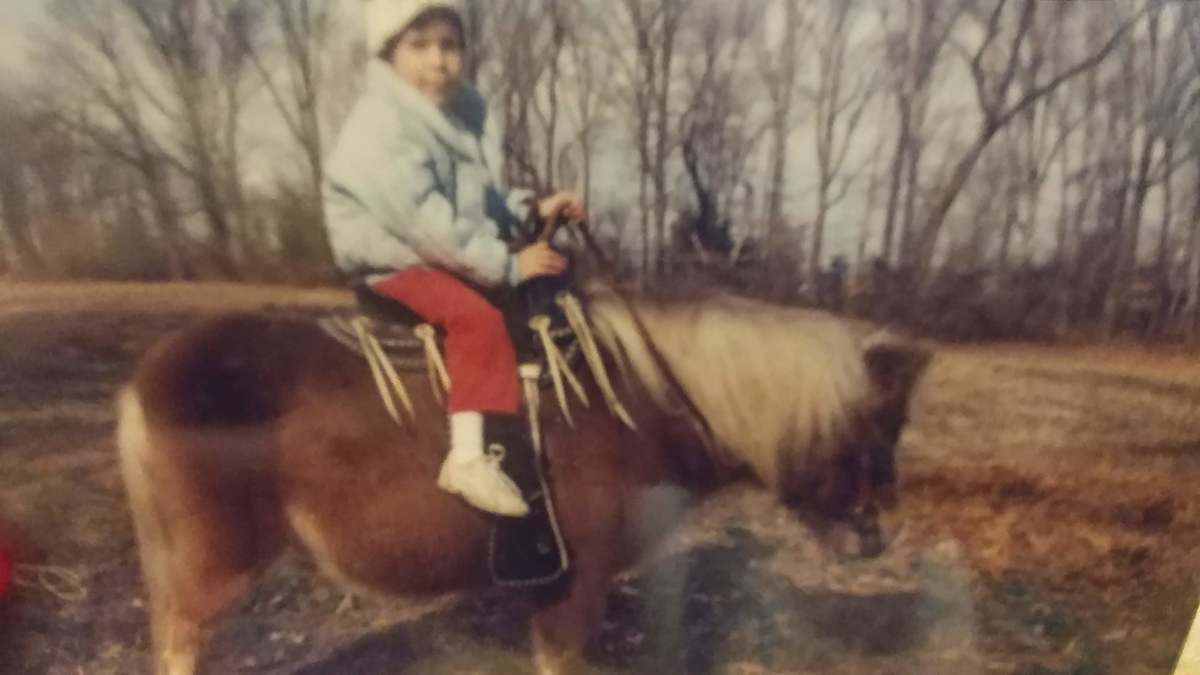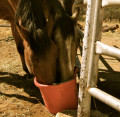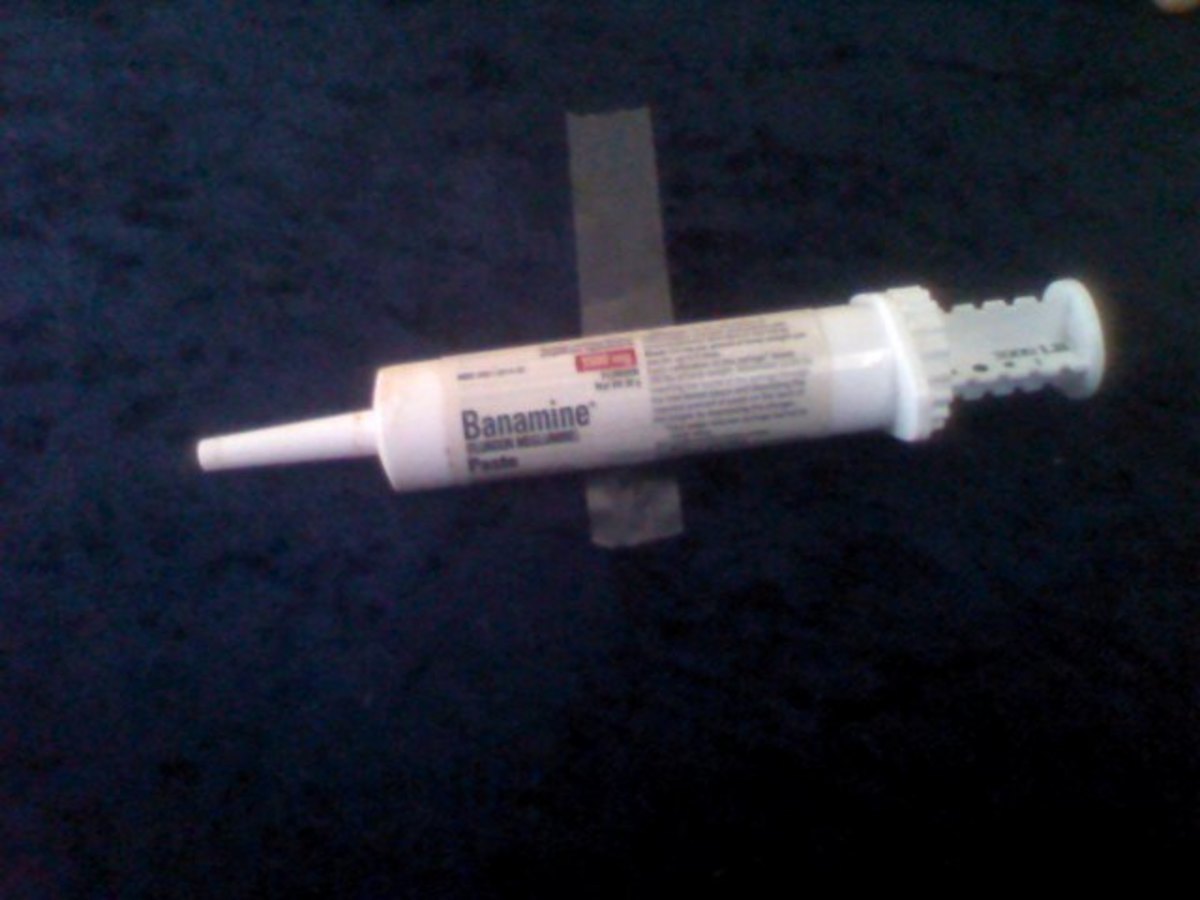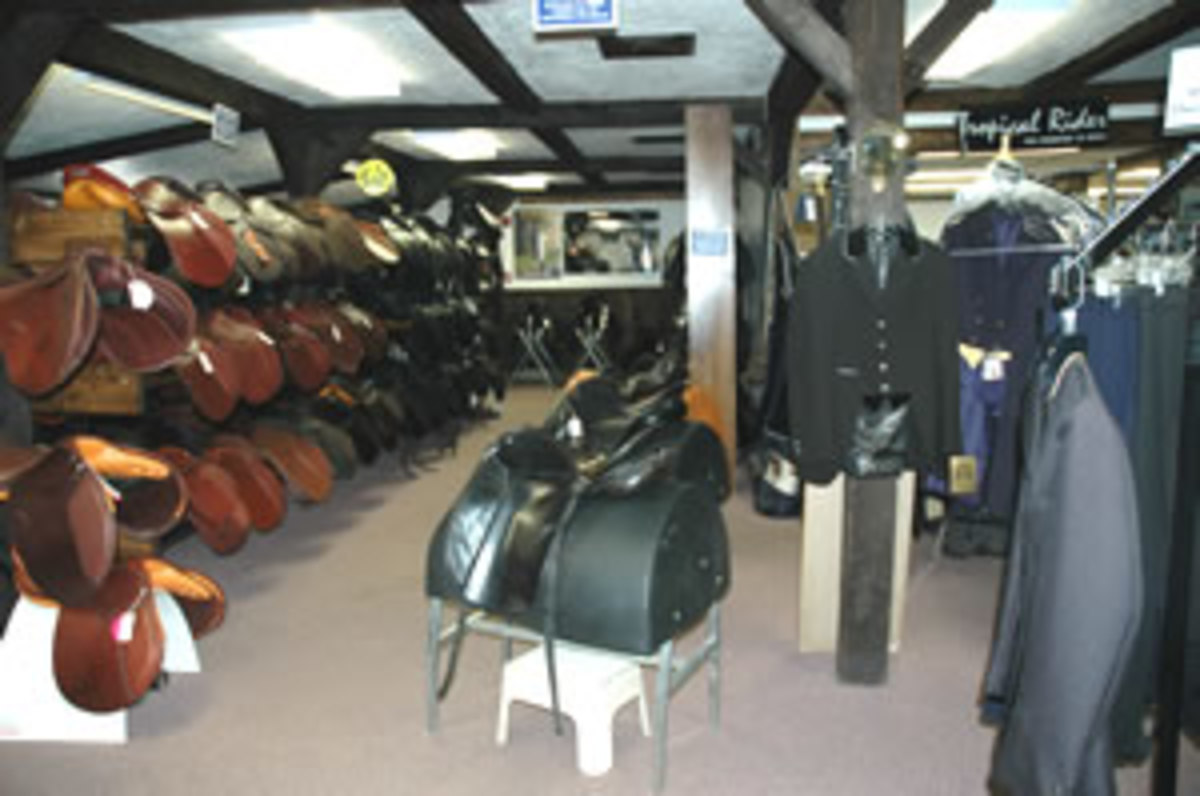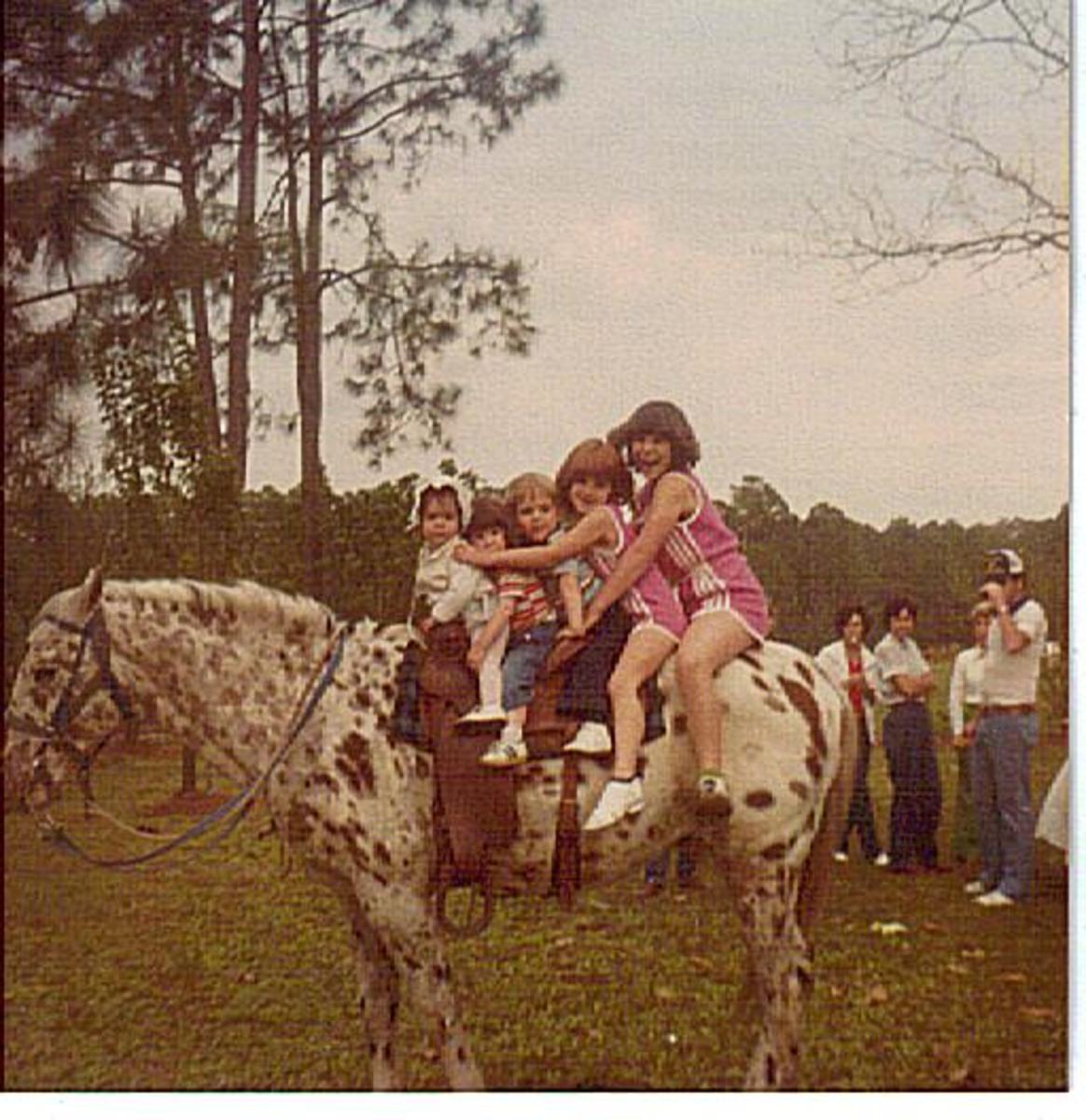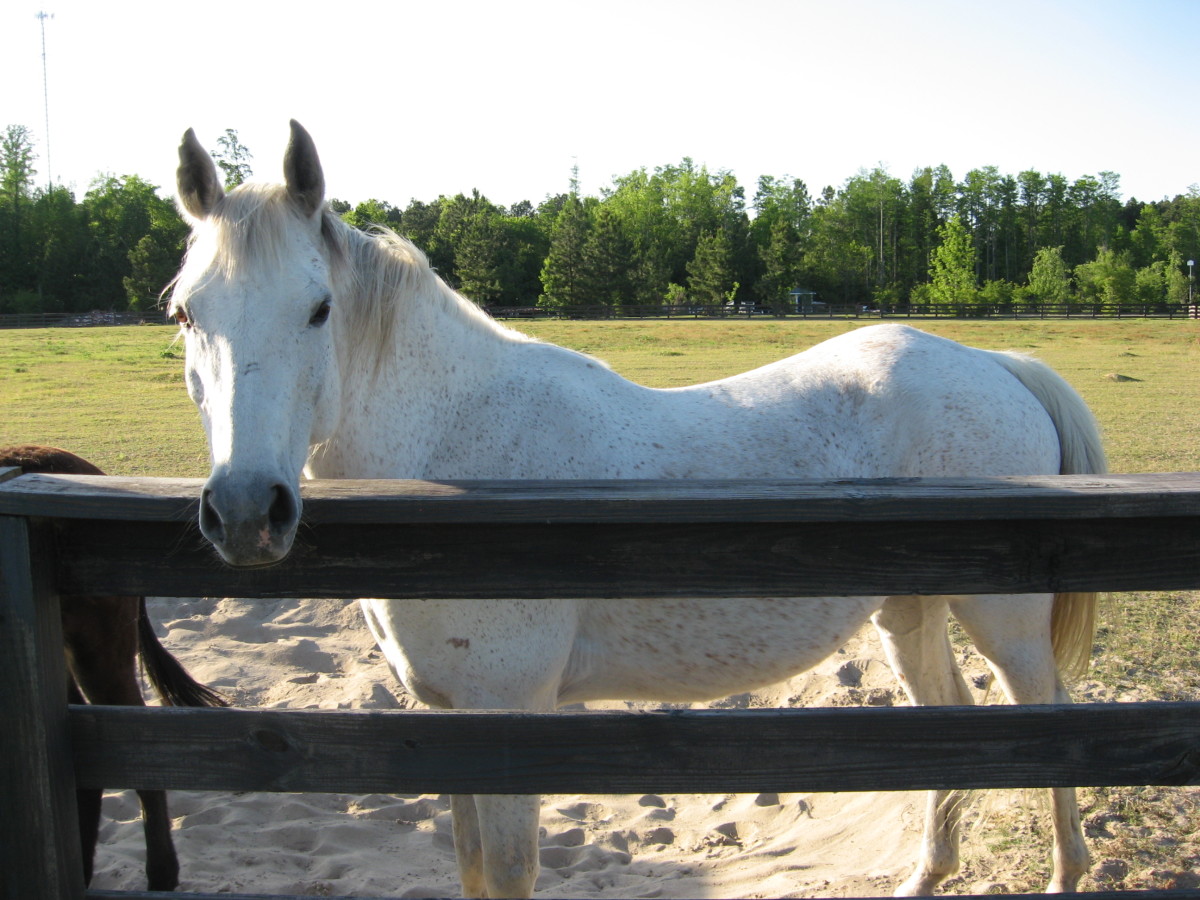How to Feed & Care for Your Horses
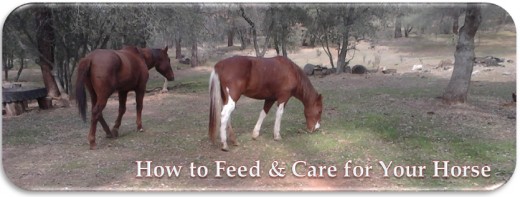
I have always had a horse in my life. I bought my first horse when I had just turned twelve years old. I delivered newspapers every morning to pay for his food and board. It was tough, delivering papers everyday of the week, going to school, homework then about an hour to spend with him in the evening, and I'd do it all over again. When you love horses, the joy, peace and companionship they bring into you life makes caring and feeding them a pleasure. I couldn't imagine going through life without a horse. If you have a horse or you're doing some research on the subject hen you'll get a good idea of what it takes to feed and care for your horses right here.
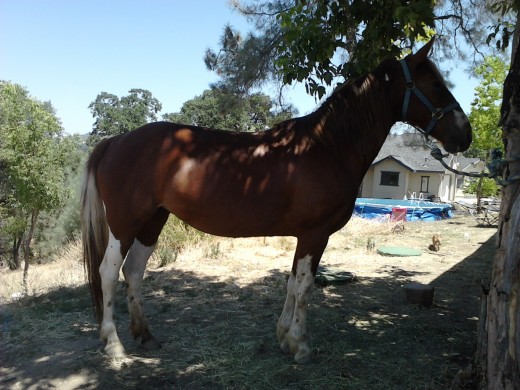
Just One Point I Wish to Get Across
If there is just one point I can get across to horse owners all over the world is; Please, Please, please, don't lock your horse up in a stable and leave him to himself. A horse in a stall cannot roll, graze, socialize, run or do anything natural to him/her. I see 2 to 10 horses that are in stalls at stables. Their owner comes to let them out maybe once a month, but usually not at all. This is one of the cruelest treatments of a horse I witness everyday. They are social animals. They are large animals. If you cannot let your horse out to run everyday, then order (better yet, pay) the stable hand to let your horse out everyday to run or roam, or roll and graze. If you haven't ridden or worked with your horse in six months then SELL IT. You don't have time to care for it obviously, so let it go to someone that will care and spend the time. Stop the solitary confinement of horses!
Feeding
The feed for your horse is going to be your biggest expense. When I say "feed" I mean the hay that horse is going to eat every day. Its not a one-lump-sum kind of expense. Its an ongoing kind of expense, not unlike a mortgage. Every month, without fail, you must pay this bill or there will be consequences.
There's three basic types of "hay" for horses.
- Alfalfa
- Oat Hay
- Grass Hay
Alfalfa is sometimes referred to as a "hot" feed. It makes a horse "hot", literally. Alfalfa is a high energy feed and if your horses aren't doing high energy work then it will only make them pace and sweat. On the other hand if you're in a cold climate or experiencing some cold rain, then alfalfa would be an appropriate choice because it will warm them up. Alfalfa is usually the most expensive, but the price on feed fluctuates greatly. At the time of writing this, alfalfa is $15.99 per bail at the feed store (six months ago it was $19.99 per bail!). If you go the extra mile and look in the classified ads you can find it for $8 - $10 per bail.
Oat Hay is a good all around feed. Its not a "hot" feed although it does have the oats in it, which will wake up your horse like a cup of coffee, but not enough to get them wound up like alfalfa will. Oat hay is not always available because of the high demand for it, but, again, check the newspapers. You can find some good deals on oat hay for between $6 to $8 per bale. Right now oat hay is running about $14.99 per bale at the feed store, if they have it.
Grass Hay is the new stand-in for oat hay. When you can't find oat hay, but you don't want to feed your horses alfalfa, the other option is grass hay. It's lighter than oat or alfalfa, but it gets the job done and horses seem to enjoy it. This too can be found in the newspaper. It's a little easier to find because any field will grow it even if only volunteer grass. It's running about $12.99 per bale at this time.
A bale of hay consists of flakes. They separate when you cut the cords and the bale opens. There is, on average, sixteen flakes in one bale. The average horse will eat one flake in the morning and one flake in the evening. If you're feeding more than one horse be sure to space the flakes a good distance from each other (20 ft if possible) because the alpha mare or top horse is going to move from flake to flake as they eat causing the other horse to move to another flake. If they are too close together it can lead to serious kicking and biting when one is bumped from their flake and can't move to another one easily. It looks like a game of musical flakes.

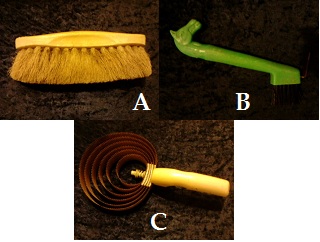
A.
| Soft Bristle Brush
|
B.
| Hoof Pick
|
C.
| Curry Comb
|
D.
| Wormer
|
E.
| Fly Spray/Wipe
|
GROOMING
Grooming should be done at least a couple of days a week. If your horse has long hair, then grooming will need to be more often. Grooming removes excess hair, parasites and dirt. When you're grooming a horse it's a good time to look for any problems like sores or cuts, bumps and blemishes. Using a soft bristle brush, start up behind the ears and brush all the way to his tail. Make sure you brush the tummy too. If there are burrs, foxtails or bits of mud use the curry comb to remove it then go over the area with the soft bristle brush. When the curry comb gets built up with mud or dust just tap it on the heel of your boot to dislodge the foreign objects. When the soft bristle brush gets hairy scrape it with the curry comb and it will dislodge the hair.
Bathing a horse is not necessary. If you do bath your horse use soap sparingly, it dries out their skin. After you bath or rinse your horse, if you set it out to pasture or put it into its paddock you can be sure it will roll. Rolling may frustrate your bathing efforts, but rolling is very natural and healthy for your horse. The dirt protects their skin from parasites and stickers in the environment they live in. Frustrating as it may be, let your horse do what he knows he needs to do.
Another part of the grooming routine is to clean your horses hooves. Your horse will quickly become familiar with the pattern in which you clean his feet. It's convenient when your horse lifts his foot when you reach down for it. Use your hoof pick and clean out any stones and debris from the hoof.

* Bots
Bot flies lay their eggs on your horses hair. The eggs are small and white. One egg is placed at the end of a strand of hair most often on the posterior of the front legs, but they can be found anywhere on the horses body. When the horse scratches his leg with his teeth the eggs break into his mouth, he swallows them and now he has worms. A good wormer will rid the horse of any worms.
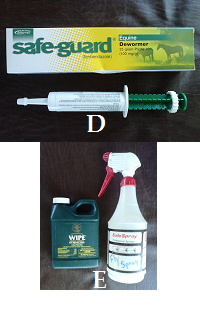
Meds
This is a good time to administer any medication your horse may require, such as wormer. If your horses are at pasture a good worming routine is every eight weeks administer a paste that contains Pyrantel Pamoate or Fenbendazole or Ivermectin. Switch between these three wormer's through out the year so you kill the various types of worms. If you notice tail rubbing or *bot eggs on your horses legs then your horse needs to be wormed.
Apply fly repellent before riding and before turning your horse out. Flies can be very irritating so save your horse some stress by applying a good quality fly wipe or spray. I've found Equi-Spot works well. It's similar to the flea drops you can put on dogs and cats but it's for horses and it works well. It takes just a few drops behind the ears, hocks, fetlock and withers. It can be difficult to find at your local feed store if they've even heard of it, so you may be better off looking online if you want to try it.
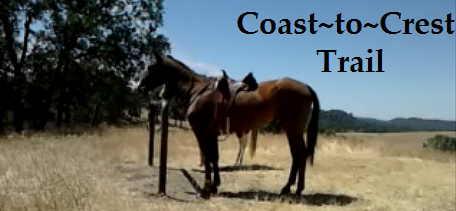
If you are not sure about your horses vaccines talk to your veterinarian. West Nile Virus as well as several other illnesses are not necessary for your horse to contract since there are vaccines available. If your horses never come into contact with other horses you don't need to vaccinate except for West Nile Virus which is mosquito born. You also have the option of purchasing the vaccines at the local feed store. If you've never given a shot to a horse before, you may want to ask your veternarian to show you how. I have only vaccinated when I was showing my horses and I've never had an ill horse. If you take care of your horse you can enjoy many years with them. Horses are living up to 35 and 40 years old now.



